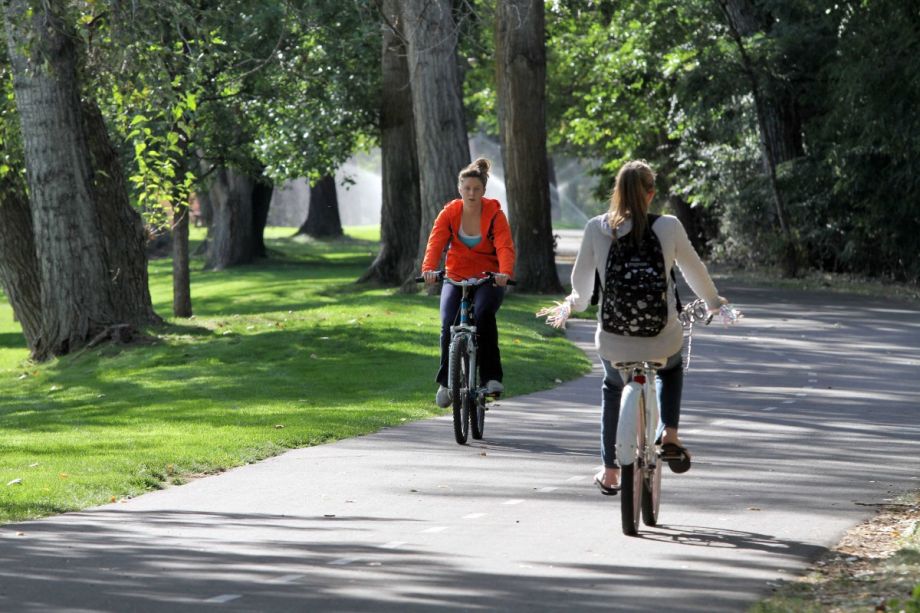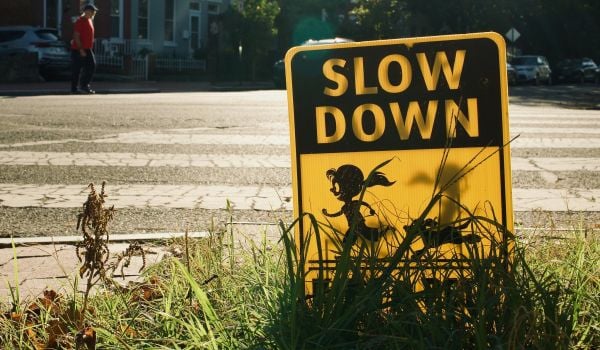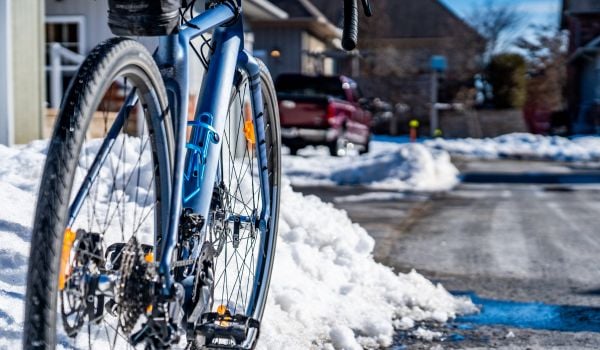Until this year the most tragicomic image of American bike ambivalence came from New York’s infamous “lanes that failed.” Installed without cyclist input by the suddenly zealous Mayor Ed Koch after a trip to Beijing, the protected tracks were torn out only a month later in November of 1980. For Koch, who’d faced motorist opposition and mocking jabs from his political peers over that long one month, the lanes stung his memory and guided his legislative future; he’d eventually stand on the steps of City Hall and declare a bombastic bike ban in 1987.
But this summer in Boise, Idaho, a pilot’s premature death rivaled that classic example.
In May, the agency that oversees Boise’s streets added buffered bike lanes to several major arterials. Oddly, that agency is not the City of Boise. As in California, where the state DOT has final say over bike infrastructure design even on city-governed streets, the Ada County Highway District (ACHD) has jurisdiction over Boise’s roadways. The board-governed agency regulates the streets of all county municipalities. Daren Fluke with the City of Boise says this unusual structure was enacted in the ’70s, when voters wanted to streamline arterial maintenance.
As was done in New York, ACHD removed the lanes only a month after they were installed. Understandably, the city, which had requested them, was not happy.
“They rushed it out too quickly without proper education or business outreach,” Fluke says.
Jimmy Hallyburton, of Boise Bicycle Project, has an even stronger critique.
“It seemed like they kind of designed the pilot to fail,” he says. “What could you possibly learn after only a month?”
But according to the county agency, a month was all they needed.
“The commission majority decided to end the pilot for a number of reasons,” Craig Quintana, of ACHD, writes in an email. “1) we learned most of what we needed, 2) some major construction was about to occur on Main Street, and 3) it was unpopular with the majority of those who gave us feedback.”
But Hallyburton sees motivation in ACHD’s structure. Because it’s a county agency that oversees both urban and suburban roadways, its internal goals don’t always line up, he says. And because an elected board from several different districts governs it, the commission tends to be politically torn between car-centric and multi-modal transportation.
“Commissioners who aren’t from Boise represent suburban areas, and they’re usually against most things that have to do with bicycling,” he says. Later he adds: “More car-centric areas don’t want to see their tax dollars go toward bike infrastructure.”
But Fluke says that money was already spent on the lanes’ installation — why not leave them in to get a broader understanding of potential ridership?
“It was perplexing to us after all the time and trouble,” he says. “Between installation and de-installation they cost at least $80,000. But [ACHD] said on the record they had all the data they needed after just one month.”
Quintana backs this up. A month, he writes, was “the minimum time our traffic engineers said was needed for the public to acclimate to the change.” He adds that “in the end the test lasted a bit over five weeks.”
But pilots are supposed to gauge both bike lanes’ impact on the surrounding roadway and their potential use. In New York, Mayor Koch lamented that after a month he saw only two bikers riding down his glorious lanes on a Sunday. But in the poorly advertised world of municipal government (where, often, a sheet of paper hung behind glass at City Hall designates “notice”) surely the public needs more time to even realize the lanes exist. And because good infrastructure tends to encourage more cycling, waiting for a bike base to build over time seems wise.
Instead of five weeks, one year is the ideal period according to Michael Andersen of The Green Lane Project. In an article on Streetsblog he writes: “Any pilot project of less than a year is unlikely to accurately capture how a project is working.”
The article also quotes Mike Goodno, bicycle coordinator with the District of Columbia, saying that it takes at least a month for people to get used to the new infrastructure. Meanwhile, Ross Swanson, a project manager in Portland, added that at least four seasons are needed for any kind of comprehensive test.
In Boise, the county commission did respond to city and bike advocate outcry by creating a stakeholder advisory group. Since June, the commission has met with members of the committee, which included Hallyburton. Their recommendations have included a two-way cycletrack and more buffered lanes, as well as best practice recommendations, including more notice time for pilots and, not surprisingly, longer trial times overall. Boise City Council, ACHD and the group will meet on September 23rd to go over these recommendations.
Hallyburton says he’s been skeptical of the process, especially with commission elections approaching this fall. Each district has its own unique character and needs, he says, and Boise is simply more urban than other parts of the county.
“In more suburban areas, voters aren’t necessarily thinking about biking as a priority,” he says.
The Works is made possible with the support of the Surdna Foundation.

Rachel Dovey is an award-winning freelance writer and former USC Annenberg fellow living at the northern tip of California’s Bay Area. She writes about infrastructure, water and climate change and has been published by Bust, Wired, Paste, SF Weekly, the East Bay Express and the North Bay Bohemian
Follow Rachel .(JavaScript must be enabled to view this email address)

















